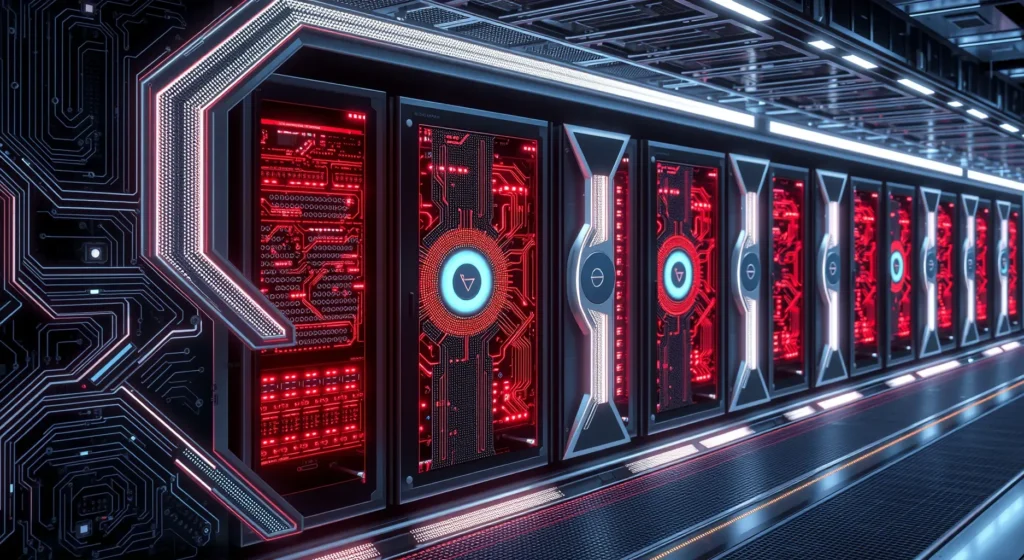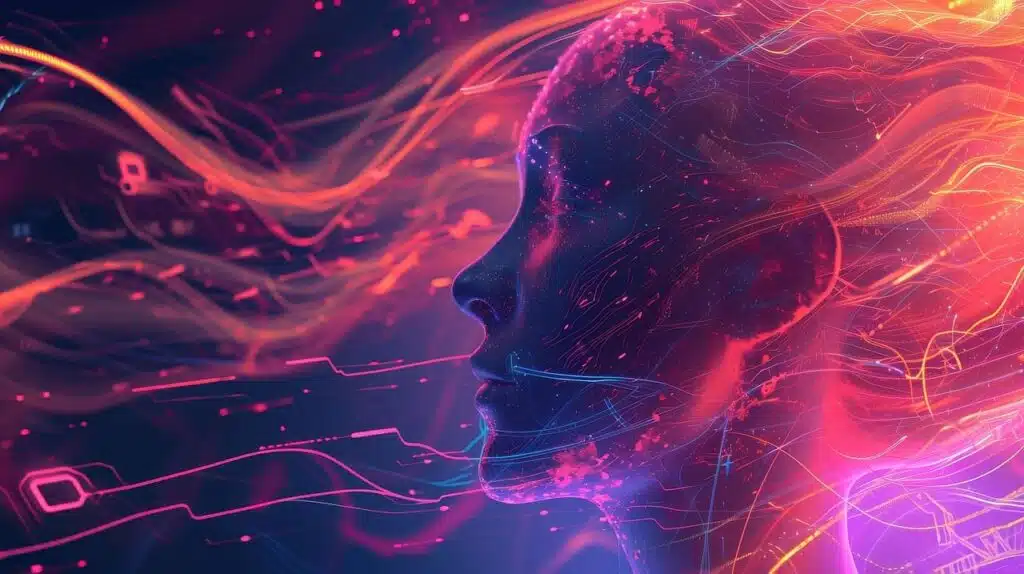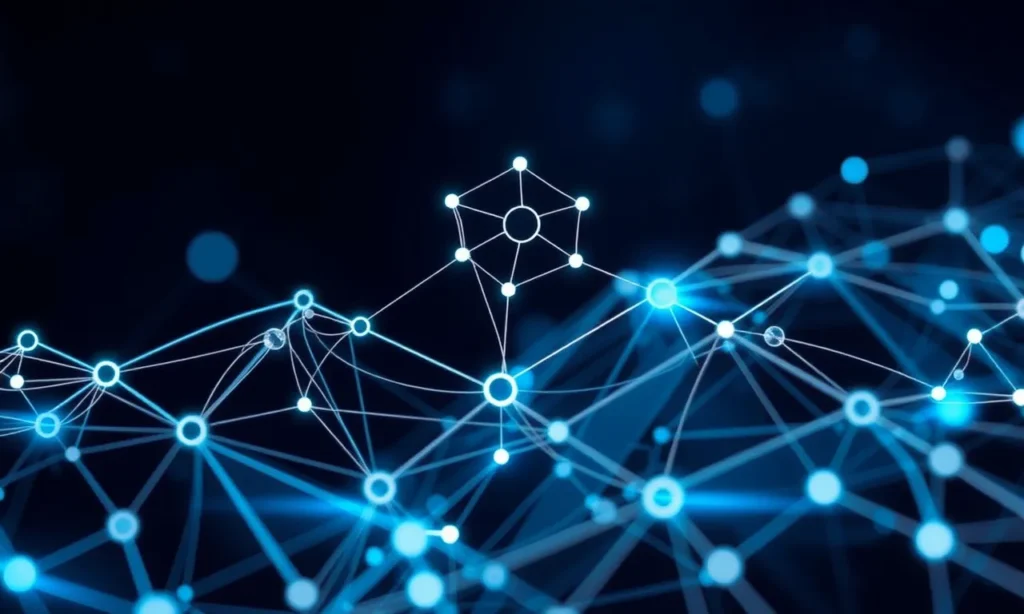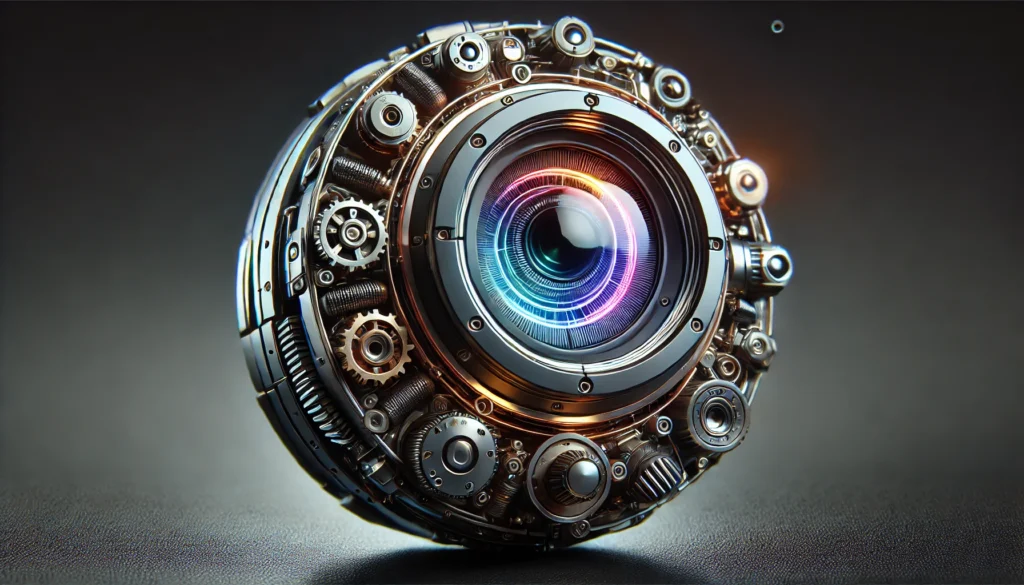Facial recognition technology has become a fixture in your daily life, often working behind the scenes to verify identities and streamline processes. DeepFace is one such system, pioneered by Facebook, that stands out for its uncanny accuracy.
It utilizes a complex nine-layer neural network to map human facial features. This enables it to recognize and verify identities with a high degree of precision.

This deep learning facial recognition system was developed from a wealth of data. DeepFace was trained on four million images to fine-tune its algorithms.
DeepFace represents a significant leap in the evolution of machine learning, as it demonstrates the ability to approach the task of identifying faces almost as accurately as a human brain.
It’s not just about matching two images; this system is adept at understanding the nuances of facial structure in three dimensions, making it a robust tool for identity verification.
Overview of DeepFace
DeepFace represents a monumental leap in facial recognition technology, and it’s no surprise that it has turned heads and raised eyebrows in the tech world. Let’s dive into the nuts and bolts of this game-changing tech.
Historical Background
Developed by a savvy team at Facebook, DeepFace advanced the frontier of facial recognition by bridging the gap toward human-level accuracy. Imagine a neural network so brainy, it boasts over 120 million synaptic connections, all fine-tuned with images that users have shared on Facebook.
Impact on Machine Learning and Technology
What DeepFace has done is no small feat. It’s like teaching a machine to not just recognize faces, but to understand them almost as well as you or I would. With an accuracy that nudges the 98% mark, DeepFace revolutionized how we think about machine learning and technology intertwining with our daily lives.
DeepFace and Facebook/Meta
When you peek into the virtual world of Facebook, now known as Meta, you’ll find DeepFace is the Sherlock Holmes of the platform. It detects and identifies faces with such finesse that one might be tempted to think it’s got a mind of its own. But let’s not get carried away – it’s not planning to take over the world… yet.
Technical Foundations

Dive into the inner workings of DeepFace, where advanced algorithms meet staggering amounts of data for revolutionary face recognition technology.
How DeepFace Model Works
The DeepFace model leverages a cutting-edge blend of convolutional layers, pooling layers, and fully connected layers to analyze facial features with precision.
You’ll find that this model employs a nine-layer neural network with over 120 million connection weights, as mentioned on Wikipedia.
Initially, the system goes through a rigorous training phase involving four million images, ensuring that when you unleash DeepFace, it performs with near-human accuracy.
Neural Networks and Data Processing
At the core, the brain-like structure of neural networks slingshots DeepFace into the future of facial recognition.
Picture this: layers upon layers of neurons crunching the numbers, sifting through vast seas of data to spot patterns like a pro.
The real magic starts with data preprocessing, where images are normalized to ensure uniformity. After all, you don’t want quirky angles or unpredictable lighting to throw a wrench in your analysis.
DeepFace’s hybrid architecture uses advanced models to provide a robust, lightweight framework for face verification and attribute analysis with grace.
Applications and Uses

Dive into the powerful spectrum of DeepFace applications, where your security and digital interaction transform.
Facial Recognition Software
Your photos connect effortlessly with friends and family, thanks to Facebook’s facial recognition technology, which identifies you to suggest tags.
Companies bolster security by implementing DeepFace to verify identities and control access, ensuring only you can breeze through their digital doors.
DeepFake Detection and Creation
Harness the power of DeepFaceLab not just to generate convincing deepfakes but also to spot them.
You’re equipped to protect against identity spoofing, with state-of-the-art detection tools that keep impersonators at bay.
Privacy Considerations
While DeepFace lights up the room with recognition wonders, it leaves a shadow of privacy concerns.
Your data is a vault where privacy is paramount; companies must use DeepFace responsibly to protect against misuse and unwarranted surveillance.
Challenges and Limitations

Diving into the world of deepfakes, you’ll encounter a web of challenges, particularly concerning the balance between technological innovation and ethical practice.
Accuracy and Ethical Concerns
Face recognition technology, like FaceNet, has made remarkable strides in accuracy, but it’s not without flaws.
Sometimes, it can be a coin toss—will it recognize you, or will it walk right past you at a digital party?
It’s tricky because high accuracy is the Holy Grail, but achieving it can lead to ethically murky waters.
Even the best algorithms might confuse your twin as you—a laughable mix-up, unless your twin’s borrowing your identity for less savory reasons.
Prevention of Identity Theft
In an era where your digital identity can apply for a credit card, preventing identity theft is crucial.
As facial recognition like FaceNet spreads, so do methods to deceive it in a digital cat-and-mouse game.
Your face is now a key to your personal kingdom. Be on guard—lest a deepfake with your smile unlocks your vault.
Technical Implementation

Before diving in, you need to know setting up DeepFace correctly is essential for robust face recognition, and the right hardware can significantly boost its performance.
Setting up DeepFace on Different Platforms
You don’t need to be a wizard to get DeepFace up and running; whether it’s a Windows 10 powerhouse or your trusty old Linux, setup is a breeze.
On Windows, simply lean on batch files to manage the process – a double click and you’re in business. Deepfacelab provides an open-source platform that’s flexible across operating systems.
Optimizing Performance with Hardware
If you want DeepFace to sprint rather than stumble, you’ll need to flex some muscle with your hardware.
An Nvidia graphics card can work like a charm, converting sluggish performance into a smooth, seamless operation.
Remember, it’s not just about raw power – it’s how you optimize that counts.
Future Directions

Prepare to explore the cutting-edge horizon where the prowess of AI meets the precision of digital analysis.
Advancements in Recognition Algorithms
You’ll marvel at how neural networks are evolving, becoming more adept at interpreting the subtleties within digital images.
Imagine a camera that doesn’t just capture an image but understands it, providing insights that were once inconceivable.
Each advancement carves a new path for technology that, frankly, might outsmart us one day.
Implications for Digital Image Analysis
The very fabric of image analysis is transforming before your eyes. You’ll witness a world where a simple snapshot could unlock a myriad of advantages.
This is all thanks to algorithms that work tirelessly behind every pixel. Who knew your camera could be on the verge of a major intellectual breakthrough?
Stay tuned, it’s going to be an insightful journey.
Yaniv Taigman’s role in developing DeepFace
- Overview:
- DeepFace is a remarkable facial recognition system created by a research group at Facebook.
- It identifies human faces in digital images using a nine-layer neural network with over 120 million connection weights.
- The model was trained on four million images uploaded by Facebook users. Read more
- Accuracy:
- The DeepFace method achieves an impressive accuracy of 97.35% ± 0.25% on the Labeled Faces in the Wild (LFW) dataset.
- Remarkably, this means that DeepFace sometimes outperforms human beings in facial recognition tasks. Read more
- Privacy Concerns:
- Due to growing societal concerns, Meta (formerly Facebook) announced plans to shut down its facial recognition system.
- This decision involves deleting the face scan data of more than one billion users, representing one of the largest shifts in facial recognition usage history.
- While Meta plans to delete facial recognition templates, it does not intend to eliminate DeepFace, the software powering the system.
- Commercial Rollout and Origin:
- DeepFace was developed by scientists from Facebook’s artificial intelligence research team, including Yaniv Taigman and Ming Yang.
- Facebook began rolling out DeepFace to users in early 2015, continuously expanding its use and software.
- Importantly, DeepFace is designed not to invade individual privacy; it alerts users when their face appears in any photo posted on Facebook, allowing them to remove their face from the photo.
- European Union and Data Privacy:
- DeepFace was not initially released in the European Union due to data privacy concerns.
- EU data protection laws argued that Facebook’s facial recognition did not comply because users did not consent to all uses of their biometric data.
- Comparison with Human Accuracy:
- DeepFace achieves 97% accuracy, nearly on par with human performance in facial recognition tasks.
- In fact, Facebook’s facial recognition surpasses the FBI’s technology, which has an accuracy of 85%.
Resources
Books
- “Deep Learning” by Ian Goodfellow, Yoshua Bengio, and Aaron Courville
- Provides foundational knowledge in deep learning, including techniques used in facial recognition.
- “Hands-On Machine Learning with Scikit-Learn, Keras, and TensorFlow” by Aurélien Géron
- Practical guide to implementing machine learning models, useful for understanding the applications of DeepFace.
Research Papers
- “DeepFace: Closing the Gap to Human-Level Performance in Face Verification” by Taigman et al. (2014)
- The seminal paper introducing DeepFace and its groundbreaking approach to facial recognition.
- “FaceNet: A Unified Embedding for Face Recognition and Clustering” by Schroff et al. (2015)
- Discusses FaceNet, a model that builds upon DeepFace for face recognition and clustering.
- “Facial Recognition Using Deep Learning: A Survey” by Wang et al. (2018)
- Comprehensive survey on deep learning techniques in facial recognition, including DeepFace.
Online Courses
- “Deep Learning Specialization” by Andrew Ng on Coursera
- Includes modules on convolutional neural networks (CNNs), which are key to facial recognition.
- “Computer Vision: Foundations and Applications” by Wesley G. Chun on Coursera
- Focuses on computer vision techniques, providing context for understanding facial recognition technologies.
- “Deep Learning for Computer Vision” by Adrian Rosebrock on PyImageSearch
- Practical guide to applying deep learning to computer vision tasks, including facial recognition.
Websites & Blogs
- OpenAI Blog
- Offers insights into the latest AI research, including advancements in facial recognition technology.
- Towards Data Science
- A Medium publication sharing articles on AI and machine learning, including applications of DeepFace.
- Facial Recognition News
- Provides updates and news on the latest developments in facial recognition technology.
Tools & Platforms
- Dlib
- A modern C++ toolkit containing machine learning algorithms and tools for creating complex software, including facial recognition.
- OpenCV
- An open-source computer vision and machine learning software library, widely used for facial recognition tasks.
- Face Recognition
- A simple and powerful library in Python for facial recognition, built using dlib’s state-of-the-art face recognition.
Conferences & Workshops
- CVPR (Conference on Computer Vision and Pattern Recognition)
- A leading conference presenting the latest research in computer vision, including facial recognition technologies.
- ICCV (International Conference on Computer Vision)
- Focuses on cutting-edge research in computer vision and related fields.
- ECCV (European Conference on Computer Vision)
- Features the latest advancements in computer vision, with significant contributions in facial recognition.
Podcasts
- The AI Alignment Podcast
- Discusses ethical and technical challenges in AI, including the implications of facial recognition technology.
- The TWIML AI Podcast
- Features interviews with AI researchers and practitioners discussing advancements in AI, including facial recognition.
- AI in Business by Daniel Faggella
- Focuses on AI applications in various industries, including the use of facial recognition technology.
These resources offer a comprehensive overview of DeepFace and its impact on facial recognition technology, from foundational concepts to practical applications and ethical considerations.
[taxopress_relatedposts id=”1″]
[taxopress_termsdisplay id=”1″]





